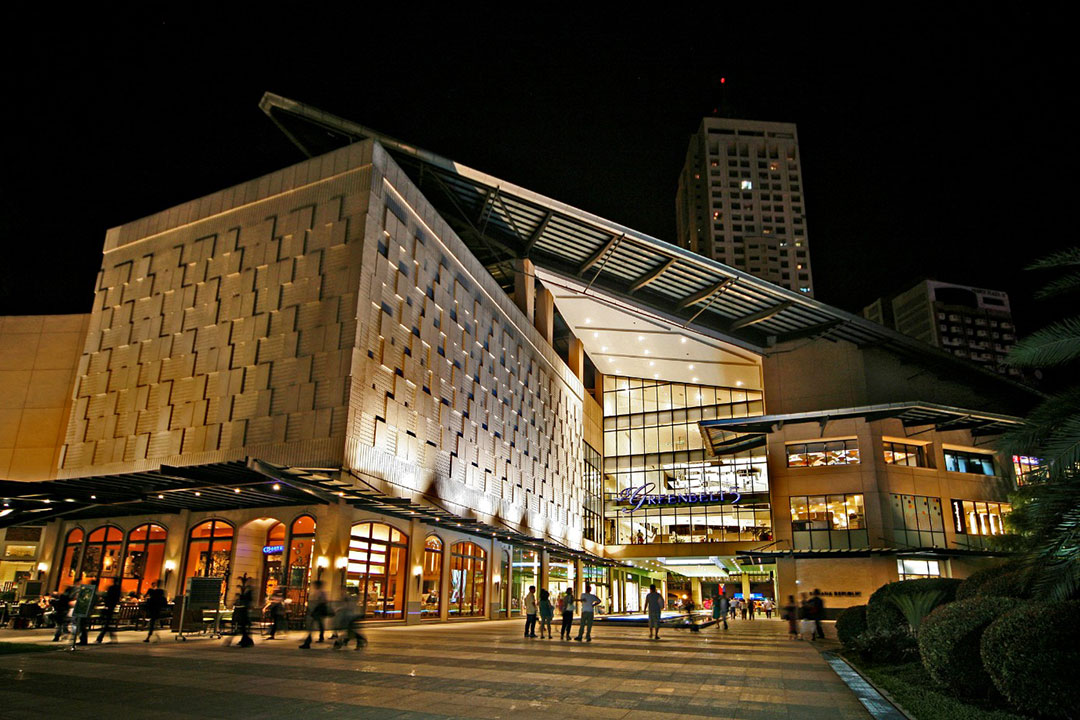
Colliers Insights
By Joey Roi Bondoc

MALL OPERATORS are aggressively renovating and upgrading their leasable retail spaces to attract more consumers. Philippine and foreign brands continue to occupy mall space with some retailers even making a comeback to the Manila retail landscape by locating both in stand-alone malls and transit-oriented shopping centers. Pockets of renovation and total mall redevelopment are visible all over Metro Manila as landlords and retailers aim to sustain footfall and consumer spending despite dissipating impacts of revenge spending.
LOCK IN SPACES IN CBDS WITH BRISK ACTIVITIES
Makati central business district (CBD), Fort Bonifacio, and Ortigas Center continue to record office and residential vacancies lower than the Metro Manila average. We also see returning expatriates choosing residential units situated in these business hubs. Colliers believes that retailers should continue looking for available retail spaces in these locations especially with our expected influx of more outsourcing and traditional office tenants either transferring to or expanding in these business districts. Previously, Colliers highlighted the need for retailers to start locking in physical space in these CBDs especially with our projected rise in lease rates for the remainder of the year.
STRATEGICALLY LOCATE IN TRANSIT-ORIENTED RETAIL SPACES
In 2023, Colliers has observed that some local and foreign brands transferred from stand-alone malls in Metro Manila to transit-oriented retail spaces like One Ayala. The latter’s retail component has an occupancy of about 60%. As of March 2024, One Ayala features a myriad of retailers from personal accessory, fast fashion, and food and beverage segments. In our view, One Ayala’s retail component greatly benefits from the presence of its 89,000 square meter (957,600 square feet) office space, with outsourcing employees as among the shops’ immediate market. Colliers believes that more foreign and Filipino retail tenants are likely to gravitate towards transit-oriented retail spaces for the remainder of 2024.
These formats will also become more popular moving forward especially with the planned completion of major public projects in Metro Manila and other major cities outside the capital region from 2027 to 2029 including airports, railways, bus rapid transit systems, and the Metro Manila subway. We see the proliferation of retail shops in these public projects especially with the government’s commitment to ‘Build, Better, More’ and spend the ideal 5% to 6% of the country’s gross domestic product (GDP) on infrastructure.
MAXIMIZE HIGH-DENSITY SPACES TO SUSTAIN FOOTFALL AND SPENDING
Colliers believes that developers operating regional and super-regional malls with expansive activity centers should promote more innovative use of high-density retail spaces. Previously, Colliers highlighted selected Metro Manila malls that are already offering flexible workspaces and vacant spaces as venues for gatherings and occasions such as Robinsons Malls. Ayala Malls, aside from actively mounting events in its activity centers, has also started offering pickle ball games in selected branches. Mall operators should drum up interest in their activity centers by organizing trade fairs, exhibits, mini concerts, and other public events. Mall operators should explore which events are likely to raise consumer traffic and encourage mallgoers to stay longer and spend more. There’s no doubt that there has been a heightened propensity for consumers to visit physical malls particularly given the new foreign retailers that have set up shop in the country. The challenge for mall operators and retailers now is how to sustain consumer footfall and entice more Filipinos to spend amid elevated interest rates and as inflation rises again after easing in January.
FLEXIBLE WORKSPACE IN MALLS AND/OR NEAR TRANSIT-ORIENTED DEVELOPMENTS
From 2024 to 2026, about 60% of the new retail supply that will likely be completed in Metro Manila are regional to super-regional malls with gross leasable area (GLA) of 50,000 sq.m. and above (538,000 sq.ft. and above). Colliers encourages flexible workspace operators to consider occupying space especially in transit-oriented mall developments especially now that footfall is reverting to pre-covid levels. Co-working space operators may also partner with retail establishments such as gyms, restaurants and cinemas to add value to their services.
Malls are very good locations for flexible workspaces as they serve as one-stop shop for employees. Customers have easy access to restaurants, cinemas, and supermarkets. Retail centers also have strong transport links and access to parking. A Colliers USA survey found that “Coworking spaces have the potential to drive foot traffic, and by default, revenue spend, to mall area shops and restaurants. More than two-thirds of people say that a coworking space located in a mall would encourage them to visit shops more often.”
AGGRESSIVE RENOVATION OF MALLS TO CATER TO EVOLVING CONSUMER PREFERENCES
Ayala Land is setting aside P13 billion ($230 million) to renovate Glorietta, Greenbelt 2, Trinoma in Makati CBD and Quezon City, and Ayala Center in Cebu. Across Metro Manila, some developers are also implementing pockets of renovation within their malls. Among the shopping centers currently undergoing pockets of renovation include Shangri-la Plaza, SM City East Ortigas, and Robinsons Manila. This aside from the 162,300 sq.m. (1.7 million sq.ft.) of new leasable retail space due to be completed every year from 2024 to 2026. We expect these malls to integrate more activity centers as well as immersive or experiential spaces to take advantage of the revival of high-density retail. We also expect these new malls to feature a mix of local and new foreign brands, with the retailers offering more refreshed and ‘instagrammable’ spaces to capture mallgoers’ attention.
SIZABLE NEW SUPPLY
From Q4 2023 to Q1 2024, Colliers recorded the completion of 281,000 sq.m. (3.0 million sq.ft.) of new retail space following the completion of One Ayala in Makati CBD, GH Mall in San Juan and Gateway Mall 2 in Quezon City. In 2024, we estimate the delivery of 338,900 sq.m. (3.6 million sq.ft.) of leasable space. Among the malls due to be completed starting Q2 2024 are: Bridgetowne Opus Mall, Solaire North Retail, SM City Deparo and SM Mall of Asia Expansion. From 2024 to 2026, we expect the annual completion of 162,300 sq.m. (1.7 million sq.ft.) of new retail space with the Bay Area accounting for half of the new leasable mall space.
VACANCY TO INCH UP IN 2024
In Q1 2024, retail vacancy across Metro Manila rose to 15.5% from 14.4% in Q3 2023 due to the opening of new malls. Despite the latest addition to Metro Manila’s stock, vacancy only marginally increased due mainly to retailers’ absorption of new space or expansion across the capital region. Among the retailers that opened shop from Q4 2023 to Q1 2023 in Metro Manila include MN+LA and Springfield in One Ayala, HeyDay and Seattle’s Best in Glorietta, Lego Certified Store PH, United Colors of Benetton and Bacarrat in Shangri-la Plaza, HOKA, Bandai Gashapon Global and Chris Sports in GH Mall and Wolfgang Steakhouse and Planet Sports in Gateway Mall 2.
To arrest further rise in vacancy and to sustain healthy levels of consumer traffic, developers have taken a more aggressive approach in renovating their leasable retail spaces. For instance, Ayala Land has announced plans to redevelop Greenbelt 1 & 2, Glorietta, Trinoma and Ayala Center Cebu. SM has also renovated SM Aura, SM Southmall (foodcourt), SM City East Ortigas and is redeveloping SM City Marikina. Shangri-la Plaza is also undergoing renovation to bring in more local and foreign retailers and welcome more shoppers. In 2024, we project vacancy to reach 17% with the completion of about 338,900 sq.m. (3.6 million sq.ft.) of new supply.
Even with the completion of substantial leasable retail space, Colliers is optimistic of greater absorption over the next 12 month. The Philippines continues to attract a lot of foreign retailers that intend to maximize the rising disposable incomes of Filipino consumers. With rosy economic outlook, sustained inflow of remittances from Filipinos working abroad, and the country reaping the benefits of having a demographic sweetspot (large fraction of population working with few dependents), we see the retail sector sustaining its growth trajectory in the years to come.
For the Metro Manila retail sector, innovation is the name of the game. Mall developers and retailers need to work together in challenging the status quo. We see aggressive transformation of retail spaces as operators scramble to attract new foreign retailers and sustain footfall. These efforts, along with fierce competition amongst stakeholders, should eventually benefit Filipino consumers. Expect more refreshed leasable spaces in malls across the country, particularly as retail players attract the young employees that have rising purchasing power. It’s the same consumer base that loves to ‘add to cart’ as well as purchase items in-store. Retailers are also likely to be more strategic especially with transit-oriented retail becoming the norm. Exciting times ahead for Philippine retail.
Joey Roi Bondoc is the research director for Colliers Philippines.